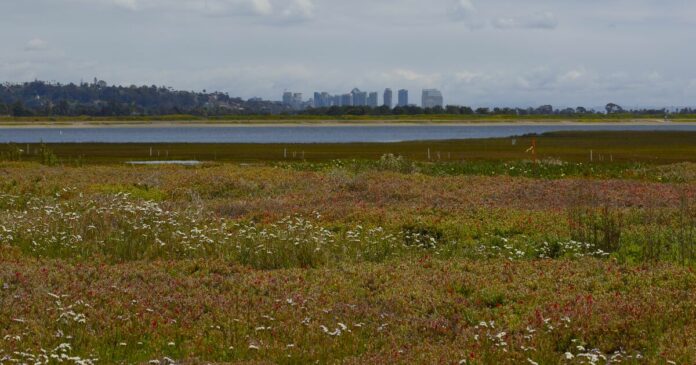The Supreme Court on Thursday limited federal protection for wetlands, ruling that marshy areas are usually not covered by the Clean Water Act or protected from development unless water flows directly from them into a waterway such as a river, lake or bay.
By a 5-4 vote, the court ruled for an Idaho couple who were blocked from building a home on a soggy vacant lot next to scenic Priest Lake in Idaho.
“We hold that the CWA extends to only those ‘wetlands with a continuous surface connection to bodies that are waters of the United States in their own right, so that they are ‘indistinguishable’from those waters,” said Justice Samuel A. Alito for a 5-4 majority.
Many wetlands will not be covered by that definition.
Justices Brett M. Kavanaugh, Ketanji Brown Jackson, Elena Kagan and Sonia Sotomayor dissented and said Congress intended to protect more wetlands from development.
The decision in Sackett vs. EPA is a victory for landowners and developers, and a setback for environmentalists.
The Clean Water Act was adopted in 1972 to prevent pollution from being discharged into the “navigable waters” of the United States, but ever since, there has been disagreement over the extent of federal authority.
Because water flows downhill, environmental regulators said they needed broad authority to prevent discharges into small streams or wetlands that drain into waterways. The prohibited pollutants included gravel and sand, which cannot be dumped into wetlands without first obtaining a permit from the Army Corps of Engineers or the EPA.
But property rights advocates argued EPA had its exceeded its authority. They said overzealous federal agents were preventing home builders, developers and even farmers from making use of their land.
The ruling marked the second victory in the high court for the Idaho couple, Michael and Chantell Sackett.
In 2004 they bought a lot that sat about 300 feet from the lake. Near the back of the property were wetlands that drained into the lake, and part of their lot was marshy. The couple had done excavation work in the past, and they dumped gravel and sand in a soggy part of the lot as a first step toward building a home.
Their real estate broker had warned them that the lot contained wetlands, and in 2007, an official from the EPA told them they needed a permit before they could develop the lot to build a home.
The Pacific Legal Foundation took up their case and won a unanimous Supreme Court ruling in 2012 that allowed them to challenge the wetlands designation in court before undertaking the costly process of obtaining a permit.
In their second challenge, a federal judge in Idaho and the 9th Circuit Court of Appeals in San Francisco ruled against the couple, and held their soggy lot was a protected wetland.
Appealing to the Supreme Court, attorney Damien Schiff said “the Sacketts’ property contains no stream, river, lake, or similar water body,” and their “ordeal is emblematic of all that has gone wrong with implementation of the Clean Water Act.”
In defense of the EPA, Justice Department lawyers said “wetlands such as swamps, bogs, marshes and fens … play a critical role in regulating water quality. They provide flood control and trap and filter sediment and other pollutants that would otherwise be carried into downstream waters.”


